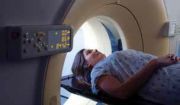Depression, Fatigue, and the Regional Distribution of Brain Damage in Patients with Multiple Sclerosis
MRI studies show comorbid depression and fatigue may have an effect on gray matter atrophy in specific regions of the brain in patients with multiple sclerosis.

Depression affects up to 60% of multiple sclerosis (MS) patients. A few structural MRI studies have suggested a relationship between abnormalities in the frontal-temporal regions of the brain and depression. Attempts to correlate depressive symptoms with the volume and rough spatial distribution of focal lesions, as well as with global brain atrophy, have yielded controversial results.
Claudio Gobbi, MD, Neurology Department, Neurocenter of Southern Switzerland, Ospedale Regionale di Lugano, Lugano, Switzerland, presented a poster on this topic at the American Academy of Neurology (AAN) 2013 Annual Meeting in the “Multiple Sclerosis: Cognition” session.
Gobbi and his colleagues wanted to find out whether depression in MS is associated with specific patterns of lesion distribution and regional atrophy in gray matter (GM) and white matter (WM) and the extent of modulation by the presence of fatigue.
A total of 123 MS patients were enrolled, including 80 with relapsing remitting disease (RRMS), 18 with benign MS, 17 with secondary progressive MS (SPMS), and eight with primary progressive MS (PPMS). The control group was 90 gender- and age-matched healthy subjects.
In the MS patients, neurologic function was scored using the Expanded Disability Status Scale (EDSS). Depression was evaluated with the Montgomery-Asberg Depression Rating Scale (MADRS) and fatigue assessed by using the Fatigue Severity Scale (FSS). Neuropsychological testing was carried out with the Paced Auditory Serial Attention Test (PASAT).
Axial dual-echo TSE and 3D T1-weighted MRI images of the brain were obtained. T2 lesion distribution and gray matter and white matter atrophy were estimated using voxel-based morphometry and SPM8 (statistical parametric mapping, version 8) neuro-imaging software.
Gobbi’s team found that, apart from fatigue which was more severe in 77 MS patients with depression (D-MS) than in 46 non-depressed patients (nD-MS), demographics, clinical findings, and conventional MRI characteristics did not differ between D-MS and nD-MS patients. As expected, MS patients experienced atrophy of the deep gray matter nuclei and of several cortical regions mainly located in the fronto-parietal lobes. White matter atrophy involved both infra- and supratentorial regions. T2 lesion distribution and regional GM and WM atrophy did not differ between D-MS and nD-MS patients.
Analysis of both combined and isolated effects of depression and fatigue on these findings showed a positive interaction between depression and fatigue at the level of the right superior frontal gyrus. Depression had a selective effect, when exclusively masked for fatigue, on atrophy of the left precentral gyrus and the right inferior frontal opercular region. No specific pattern of GM or WM atrophy related to fatigue, when masked for depression, was found.
Gobbi concluded from these results that depression in MS had an effect on gray matter atrophy of regions in the bilateral frontal lobes. The concomitant presence of depression and fatigue was associated with atrophy of the right superior frontal gyrus. These patterns showed only a partial overlap with those observed in other non-MS related depressive disorders. Gobbi speculated that there may be a subset of structural changes peculiar to depression in MS.